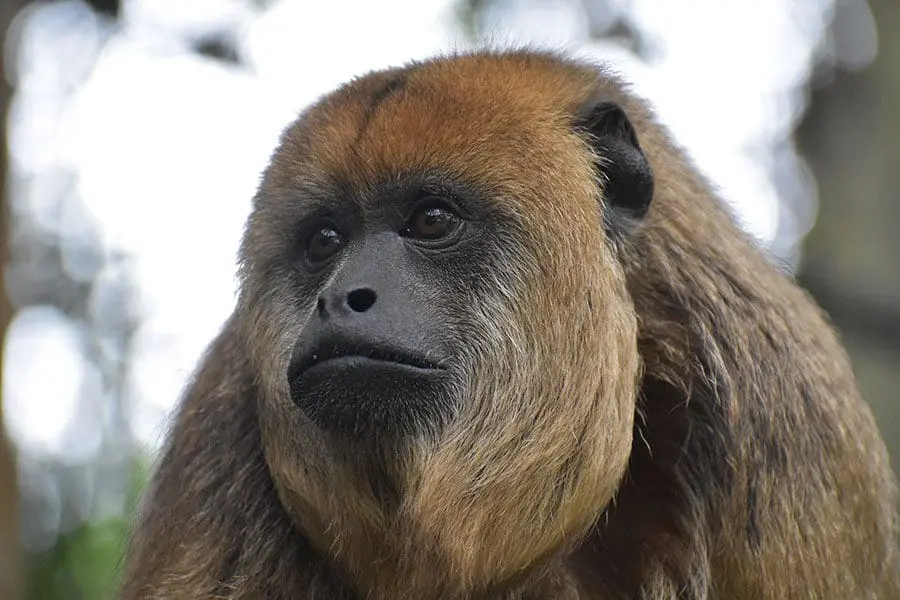

Welcome to the Zoo!
If you’ve come to visit, you may have seen—or heard—our black howler monkeys in Rainforest Revealed. Twenty-two-year-old female Maddie and 17-year-old male Stormy have called our Zoo home since 2017, and they will soon have four new friends of the same species.
Four female howler monkeys arrived earlier this week from San Francisco Zoo as part of the Association of Zoos and Aquariums’ Species Survival Plan (SSP) for their species. Three of the four have been recommended through the SSP to breed with Stormy. SSP’s are designed to manage the populations of animals within AZA-accredited zoos to ensure healthy, genetically diverse populations.
Twelve-year-old Baya comes to us along with three of her offspring (all from different litters): 6-year-old Bennie, 5-year-old Batata and 4-year-old Beatle. Baya, Bennie and Beatle have been recommended to breed with Stormy, while Batata had been previously spayed as a result of a medical condition.
The four females are currently living in the Rainforest Revealed habitat across the boardwalk from the Flooded Forest habitat. This is just a temporary home as they undergo a quarantine period to prevent the introduction of novel diseases or parasites to the animals already in our care. As a precaution, all animals are quarantined (either behind the scenes or on habitat) upon arrival for a minimum of 30 days.
Our team chose to quarantine this group on habitat so that they can see, smell and hear Stormy and Maddie (and vice versa) throughout the process. This allows us to begin the introduction phase early. This temporary home is also a more suitable space for a larger group of howler monkeys such as our new females.
When their quarantine period ends, the new monkeys will be slowly introduced to Stormy and Maddie using our tunnel systems. We call this the “howdy” process, as the two groups meet with a barrier in between them so that we can gauge their social interactions. Our animal care staff will be closely supervising throughout this period to watch for positive social behaviors between our new females and the two older residents.
Positive behaviors that our team will be looking for include greetings and attempts to groom. The most important thing we are looking for to move forward in the introduction process is a lack of territorial behaviors like howling or baring teeth. Black howler monkeys typically live in groups of 5-10 in their natural habitat, so our group size is within their normal range of social structures.
When introductions are complete, all six howler monkeys will live together in the Flooded Forest area along with capybaras, macaws, ducks and more! “This is such a huge and diverse habitat, that it will allow them to easily coexist within their own personal space while they bond as a troop,” said Zach Marchetti, Curator of Animals.
“We are very hopeful that with the introduction of these females, we will have a successful breeding troop of howler monkeys for years to come,” said Zach. “Hopefully baby howler monkeys will be on their way in the near future!”
Black howler monkeys are named for their loud calls, which are most often heard at dusk and dawn. Females of this species typically have one offspring every two years following a six-month gestation period. Although black howler monkeys are not considered endangered, they are threatened in their natural range due to habitat loss, agricultural development and human hunting.
Brevard Zoo is an independent, not-for-profit organization that receives no recurring government funding for our operating costs. Your generous support enables us to continue to serve our community and continue our vital animal wellness, education and conservation programs.
